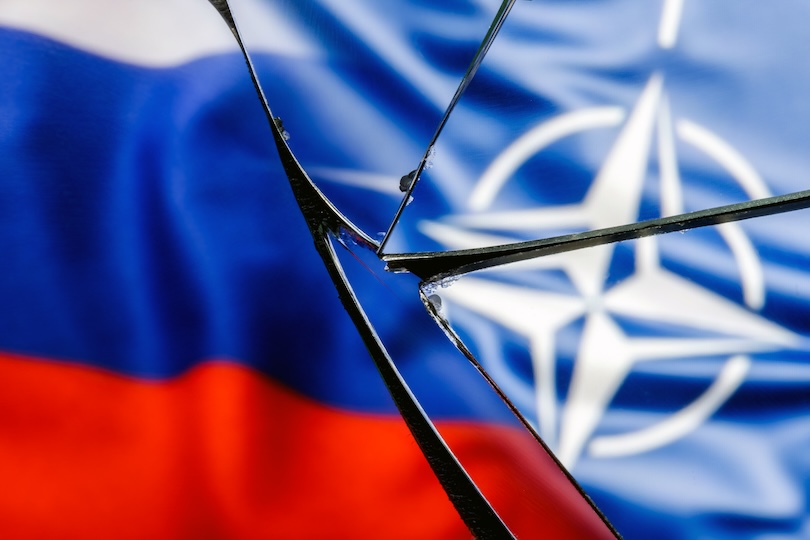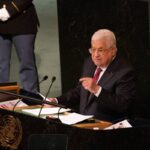Our analysis on official Russian statements about NATO between 2014 and 2021 (Wilhelmsen and Hjermann 2022) has proven that Russian discourse has entrenched the understanding of NATO as hostile, misleading, and continually engaged in waging hybrid warfare towards Russia. In truth, the rhetoric left no room for Russia to view a NATO motion as defensive. That such a false sense of safety is conducive to navy battle, as evidenced by Russia’s conflict towards Ukraine, may be understood by means of a constructivist studying of the ‘safety dilemma’.
In Jervis’s (1978) basic formulation, the “safety dilemma” explains how defensive measures can result in unintended penalties and undesirable battle, with steps meant to extend safety having the other impact. Whereas this defensive realist model sees the safety dilemma as deeply rooted uncertainty as lack of expertiseA constructivist studying views social actuality as intersubjectively constituted uncertainty as a matter of interpretationStates come to know one another as defensive or hostile by means of social, discursive, and processual interplay, leaving political entities with very restricted management over how their actions are interpreted (Mitzen 2006). In studying the actions of their opponents, political actors can do the identical low cost the uncertainty related to making interpretations, arriving at a ‘misplaced certainty’ (Mitzen and Schweller 2011), creating a very acute ‘securitization dilemma’ (Van Rythoven 2020). We construct on this analysis to argue that intense and repeated political agitation, which portrays the Different as threatening, misleads actors into discounting uncertainty, thereby selling the epistemological hubris of “understanding” their opponents. Russian official rhetoric after 2014 seems to have promoted such hubris (Wilhelmsen and Hjermann 2022).
Within the years main as much as the all-out conflict in Ukraine, the Russian management cultivated a “conspiracy concept,” focusing on Russia as a goal of relentless US and NATO geopolitical expansionism. The occasions of February 24, 2022 have clearly demonstrated that Putin’s Russia is a ruthless aggressor, however Moscow’s repeated narrative that it’s underneath assault by NATO has, we imagine, strengthened the perceived certainty of a hostile atmosphere that paved the way in which for the 2022 reform. invasion of Ukraine.
On this examine, we discursively learn 156 official paperwork of the Russian Ministry of Protection (MOD) and the Russian Ministry of Overseas Affairs (MFA) through the interval 2014-2021, taking the MFA and MOD texts as a mirrored image of what we see as a collective interpretation of NATO actions in guiding Russian safety coverage. Our in-depth studying of a number of years’ price of paperwork, based mostly on poststructuralist discourse evaluation methods, confirmed how official language modified, and the way the illustration of NATO as hostile grew to become naturalized. We word that six ‘certainties’ about NATO grew to become entrenched in frequent sense inside the management of Russian safety coverage after 2014:
1: “The West” is actually one actor: Washington, DC. –The Russian discourse merges a number of Western actors right into a single, threatening actor. “NATO,” “US,” and “the West” are sometimes used interchangeably and explicitly thought-about an identical in Russian statements (e.g., “Whenever you say NATO, you perceive the US”).[1] This has the impact of transmitting the hazard and hostility perceived in one of many actors to the others.
2: The US/NATO have created a world of instability and insecurity– ‘Like lava from a volcano, which alongside the way in which destroys all of the constructive issues which have gathered over the previous decade, Western nations are creating new dividing traces… the worldwide safety system has been undermined by the actions of the US and its allies.'[2] This MOD quote from Might 2014 displays a view that permeates Russian official texts: that NATO/US actions and vanity have destabilized the worldwide state of affairs; Order may be changed by chaos at any time. Right here Russia is introduced as a champion of the other; a world with a ‘steadiness of pursuits and compromises’ fairly than ‘violence and aggression’, which represents a pragmatism that it hopes will permeate the NATO system.[3]
3: The US/NATO is inherently hostile and deceitful –Russian rhetoric presents the US and NATO modus operandi as constructed on deception, double dealing and false pretenses. The US/NATO is interpreted as artificially fueling crises and instability for their very own profit, based mostly on NATO’s ‘genetic code'[4] and relentless drive for geopolitical growth. Russian leaders imagine that the US/NATO can by no means be trusted: NATO say one factor and do the other. In our lecture, Russian rhetoric fuels a conspiracy concept through which NATO is the automobile in an anti-Russia plot through which the US pulls all of the strings.
4: NATO has an in depth toolkit for its hybrid conflict towards Russia –Russian rhetoric additionally portrays a particularly Western type of warfare, which reinforces the picture of NATO’s hostile character. Particularly, NATO/US/West is depicted as counting on an overarching technique of fomenting ‘color revolutions’: imposing egocentric insurance policies on different nations underneath the guise of spreading democracy, and utilizing propaganda and instrumentalisation of socio-economic grievances to unrest in a means that serves the West and harms Russia. This, along with NATO’s navy would possibly, is what makes the West so harmful in Moscow’s view of world affairs.
5: NATO grew to become more and more harmful after 2014 – Since Russia’s 2014 conflict towards Ukraine, NATO has been seen as increasing its actions on the European continent. That is mirrored within the Russian discourse by means of repeated statements concerning the hostile intentions of NATO, the US and the West. New navy workout routines, installations and troop deployments, in addition to NATO actions earlier than Crimea, are framed and linked to a series of hostile acts dedicated by NATO, and NATO hostility is more and more naturalized in rhetoric. NATO is seen as an ‘open course’ in direction of ‘military-political ‘containment’ of Russia’: stability in Europe is a factor of the previous.[5] As new occasions unfold, the Russian management’s rhetoric is accumulating much more “proof” of this “open” course of hostility, such because the US withdrawal from the INF Treaty in 2019 and the truth that NATO’s strategic paperwork Painting Russia as a navy menace.
6: NATO’s hostile actions are spreading into beforehand ‘cooperative’ areas – Though the portrayal of the Arctic as a ‘distinctive partnership’ room is retained by Russian leaders, NATO as an actor isn’t talked about in non-hostile phrases. Total, Moscow’s interpretation of NATO as hostile and pushed by a want for geopolitical growth seems to have unfold to its interpretation of NATO’s actions within the Arctic. For instance, Russia’s MFA has famous that “the actions of NATO member states within the Arctic have gotten more and more systematic and provocative, turning the Arctic into an space of geopolitical competitors.”[6]
These six components had been developed inside the Russian management as certainties about NATO, ruling out any concept that the treaty group couldn’t be perpetually hostile in every single place. As this misplaced certainty (Mitzen and Schweller 2011) about hostile NATO intentions progressively grew to become entrenched, Russia’s willingness to see the world by way of one large ‘Russophobic’ conspiracy concept dominated out political alternate options to what Russia considers ‘defensive’ measures . This conspiratorial frequent sense of pervasive NATO hostility was a key prerequisite for Russia’s huge escalation of its conflict towards Ukraine beginning in February 2022.
References
Jervis, Robert. 1978. “Cooperation underneath the Safety Dilemma.” World politics 30(2):167–214. https://doi.org/10.2307/2009958.
Mitzen, Jennifer. 2006. “Ontological Safety in International Politics: State Identification and the Safety Dilemma:” European Journal of Worldwide Relations 12(3):341–70. https://doi.org/10.1177/1354066106067346.
Mitzen, Jennifer and Randall L. Schweller. 2011. “Figuring out the Unknown Unknowns: Misplaced Certainty and the Starting of Battle.” Security research 20(1):2–35. https://doi.org/10.1080/09636412.2011.549023.
Van Rythoven, Eric. 2020. “The Securitization Dilemma.” Journal of International Safety Research 5(3):478–93. https://doi.org/10.1093/jogss/ogz028.
Wilhelmsen, Julie and Anni Roth Hjermann. 2022. “Russian Assurance on NATO Hostility: Implications within the Arctic.” Arctic Evaluate on regulation and politics 13 (2022): 114. https://doi.org/10.23865/arctic.v13.3378.
Feedback
[1] Russian MFA, February 4, 2016. https://www.mid.ru/ru/foreign_policy/information/1522112/. Accessed October 3, 2023.
[2] Russian MOD, March 5, 2015. https://perform.mil.ru/news_page/nation/extra.htm?id=12009584@egNews. Accessed October 3, 2023.
[3] Russian MOD, April 16, 2015. https://perform.mil.ru/news_page/particular person/extra.htm?id=12016239@egNews. Accessed October 3, 2023.
[4] Russian MFA, September 5, 2023. https://www.mid.ru/ru/detail-material-page/1645859/. Accessed October 3, 2023.
[5] Russian MFA, April 19, 2016. https://mid.ru/ru/foreign_policy/information/1527198/ Accessed October 3, 2023.
[6] Russian MFA, March 11, 2021.
https://www.mid.ru/en/internet/visitor/nedostovernie-publikacii/-/asset_publisher/nTzOQTrrCFd0/content material/id/4616530. Accessed October 3, 2023.
Learn extra about e-international relations


